#our flag means death analysis
Text
Ok listen, I hope no one's mentioned this yet, but I've been thinking there was something odd about the kiss in 2x06 since I first saw it, and I've just figured it out: The kiss is mirrored.
The short sleeve on Ed's jacket is on the right, and I checked back to see if he was just being subtly silly and switching it up for Calypso's birthday, but no.
When Stede grabs Ed in the doorway, the short sleeve is on the right like normal:

And then during the kiss, the short sleeve is on the left arm:
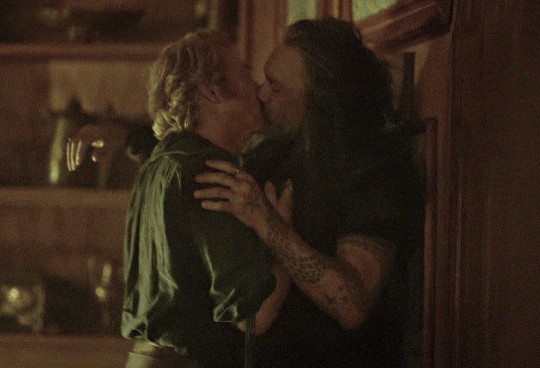
Now, was this a choice or did they just think the shot looked better mirrored when they were cleaning it up in post? I can't say for sure, but I'd like to think it was a conscious choice.
The horizontal flip lends a really nice cinematographic effect to this scene here. Mirror images in general can be unsettling when you aren’t expecting an image to be mirrored, even on a subconscious level. It gives a subtle visual representation of the fact that this moment happening right now, no matter how consensual and mutually enjoyable, is a little bit whack. It's not the right moment, they have not worked out everything they need to work out and they are both intensely vulnerable.
But emotions are running high, Stede has just betrayed the defining feature of his morality for Edward. If the defining feature of who he is is that he doesn't kill in cold blood, he has just demonstrated to himself, Ed, and the entire crew that Ed is more important to him than his own moral code. He must not even know who he is in that moment except that he's the man who loves Edward Teach. How simultaneously tortured and enraptured he must be. So it's gonna happen, even if it's all backwards, and we get to see that play out visually which I really like.
There's also an element of role reversal in the sense that Stede made the choice to kill when Edward wouldn't. Ed wasn't trying to outsource the big job on Ned, he was saying we don't need to do the big job, please don't do it, and Stede did it anyway. Stede is the real pirate in that moment. He made a choice to kill when he didn't have to. He broke the rules. He broke his own cardinal rule, and it's going to fundamentally change the way he views the world and the way the world views him, and the godforsaken scene is mirrored. Regardless of whether this was intentional or not, I am losing my mind
#ofmd#our flag means death#ofmd season 2#our flag means death season 2#blackbeard#stede bonnet#gentlebeard#blackbonnet#edward teach#ed teach#ofmd analysis#our flag means death analysis#taika waititi#david jenkins#rhys darby
260 notes
·
View notes
Text
Gnossienne No. 5
Gnossienne No. 5, composed by Erik Satie in 1889, is Ed and Stede’s theme. It’s played at each of their important moments throughout Our Flag Means Death. When you listen to the piece in full, it’s like someone keeps starting the piece and messing up a little so they start all over again, and each scene experiments with a different instrument during a different segment of the piece, like flute or harpsichord. It remains tentative but each time it’s a little more hopeful, a little more determined, a little more wistful. Ed and Stede are revealing little bits of themselves to each other, checking in and reaching out towards each other’s vulnerabilities and offering safety, exploring what they mean to each other. But the base notes, their connection and chemistry, always stay a steady anchor. The whole piece is a bit sloppy and giddy and all over the place yet always comes back to the same notes and the same progression. They can’t quite place their finger on what's happening so the music can’t resolve in a satisfying way, but each time it becomes clearer and more complete until the end of the song which is played during the scene where they kiss and they’ve finally figured out how to play all the notes and it’s beautiful. It’s like this culmination of everything the performer has been trying to communicate and finally gets right- but it’s still cut a bit short.
I've talked before about how often the show is in conversation with creative works that signal shifts towards modernism, which is apt for a show that famously and hilariously plays with time periods and shifting 1717 up with anachronistic modernisms. It's true in its references to literature and painting, and it's true of music as well. Satie was experimental for his time, taking inspiration from impressionist painters like Monet who endeavoured to create reflections of the ordinary and the real that were non-static and moving, in both senses of the word. He's sometimes described as the spiritual father of minimalism, whose compositions @unadulteratedkr calls "subversive in its relative simplicity." While giving me some context for Satie, she told me that while his notations indicate that performers should leave room for poetry in their expressions of the music, he insisted the tempo remain modéré, meant at the tempo of the human heart. The bohemian was a truly hopeless romantic who proposed to the painter Suzanne Valadon on their very first night together. He wrote her songs and she painted his portraits, and when she left him after 5 months, he was so devastated that he wrote of being left with “nothing but an icy loneliness that fills the head with emptiness and the heart with sadness.” She was supposedly his only ever known love affair.
Gnossienne No. 5 dovetails OFMD's minimalist approach to romance, where the sweeping and swelling feeling of falling in love is left to speak for itself in its understated, clumsy simplicity. The piece is experimental in the way that the show is experimental, stripping the queer love story down to its rawest most basic components without being weighed down by oppressive forces or grand expectations. It allows for comedy and lightheartedness and the experimental nature of becoming friends to lovers. It’s their song through and through. I’m sure we can expect it to play at their wedding, and we will all dutifully cry our eyes out.
#our flag means death meta#ofmd meta#our flag means death analysis#ofmd analysis#our flag means death#ofmd#edward teach#stede bonnet#ed x stede#blackbonnet#gentlebeard#gnossienne no. 5#erik satie#classical music#classical composers#david jenkins
602 notes
·
View notes
Text
Can anyone do a meta on why the one instance of seeing the color purple was by Ricky?? What does it mean?? Were we not going by color symbols anymore?
#our flag means death#ofmd s2 spoilers#spoilers#ofmd#stede bonnet#edward teach#blackbeard#blackbonnet#gentlebeard#ofmd our flag means death#ofmd meta#our flag means death analysis#our flag means death meta#prince Ricky
14 notes
·
View notes
Text
Why I love OFMD editing so much (episode 10, Love, and music)
In film postproduction, or what I call editing, the idea is that you have to arrange all the elements of film or visual media to tell a story. One of those elements is music.
I’m definitely not the first one to point out how important music is in OFMD. We have all been traumatised by different music. I for one am obsessed with Gnossienne no. 5 because that’s their song and The Chain makes my chest hurt in angst every single time I listen to it. I am planning to make a big ass meta on Gnossiene no. 5, but for now I want to focus on another piano piece that is used at a very pivotal point of the series: Debussy’s Rêverie.
As you all already know, that’s the piano piece that is part of the amazing fancam in episode 10, where Stede realises he loves Ed. However, that’s not where the piece ends. It actually is edited to mirror one of the major themes at the end of both Stede and Ed’s journeys away from each other, which basically moves in parallel throughout episode 10. That theme is Love; more specifically, how Stede and Ed “come to terms” with their love. We all know that ends in two extremely different ways and that’s because they are still very much self-centred and oblivious to the fact that one is in love with someone, the other person has to be considered too in the equation for it to work.
They only know their side of the story and, thus, have different questions about Love. The music is edited to reflect this disconnect: Stede and Love, and Ed and Love, not yet together. I will try to explain how.
Debussy's Rêverie
“God doesn’t play dice with the universe”. In the same way, we all know this show chooses its songs and music for a reason: on one side we have the songs that are pretty self-explanatory thanks to the lyrics; on the other side we have the “classical” music pieces that are used for what they evoke in the mind of the audience (I’m looking at you “Dies Irae”) or to convey a certain mood (Stede actually is presented with baroque music in the background on ep 1 to exacerbate his campy, out-of-place self).
This led me to ask, why use Rêverie specifically? You already know I’m that kind of nerd who looks up words in the dictionary and rêverie has two translations (if any French-speaking person reads this and it’s somehow inaccurate, please let me know!):
1. [réflexion] daydreaming, being deep in thought
2. [chimère] dream, daydreaming, delusion
Rêverie is being deep in thought, reflecting on something, but it can also refer to literal delusion. Two different conceptions that lead to two different things, right? It’s safe to say that, in that sequence, both Stede and Ed reflect on what they had, on what that means or meant for them, and the conclusion of their reflection is the way they will proceed with the knowledge they gained. All centred around Love.
Like I mentioned before, the crux of this point in the general plot is that Stede and Ed are apart from each other. They have to figure out stuff on their own with what they know, what they remember, and with the input of the people they have around because they have no personal reference for Love in this way. Similar to this, Debussy’s piece is fragmented to show that.
In classical music, each piece, no matter how big or small, has a structure which consists generally in 1 or 2 themes, or ideas, that are explored, developed, and constantly referred to throughout the piece. Much like a sentence, a theme has 2 parts, a “question” and an “answer”. You know a theme ends because, much like a sentence, there’s a sense of reaching some point, a sense of closure. In tonal music, that means reaching the tonic, i.e. the tonality (chord) on which the piece was created.
Rêverie has 2 themes that are pretty contrasting and, therefore, are very hard to miss. It’s structure is divided in 3: Theme A, theme B, and a recapitulation of A and B that ends up in the tonic with a major chord -> [A] [B] [AB]
This is theme A:
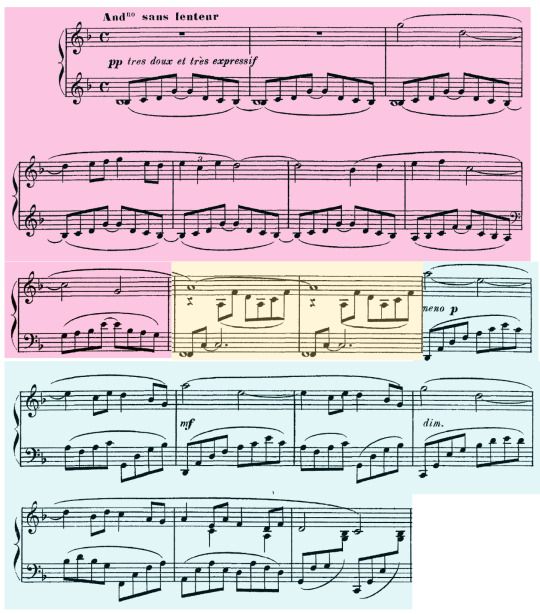
(time in audio [0:00-0:51])
A is the main theme of Rêverie. It has two parts or sections (A1 in pink [0:00-0:24]; A2 in blue [0:30-0:51]) joined by a little “bridge” that is called “cadenza” (in yellow [0:24-0:29]).
This is theme B:
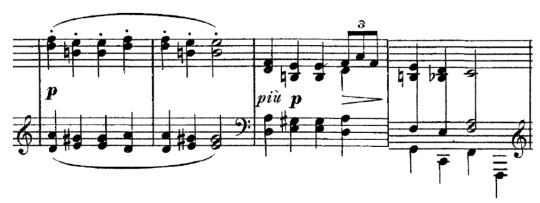
(time in audio [2:14-2:26])
B is there to create contrast with A, both rhythmically (the figures used) and tonically (this is in a minor key, the "opposite" of a major key which is how A begins and ends).
If the theme of the sequence in the episode is reflecting on Love, one could argue the main theme of Rêverie is used to represent Love. With that in mind, let’s see how the editors use it on the sequence itself.
2. Stede and Love
Stede, light of my life, began this series pretty unaware of what or who was around him and also of his feelings. The growth of Stede depended on him finally beginning to notice everything around him but also have the courage to notice what is inside him and own it. David Jenkins said Stede unknowingly flirted with Ed in the moonlight scene, but I think we all agree that by episode 9 he was aware that he felt something for Ed. He knows Ed makes him happy. However, it’s not until this beautiful heart-to-heart with Mary that he is able to fully understand what that something is: Love.
“How does it feel…to be in love?” Stede asks Mary after they were talking about how amazing Doug is.
Mary answers: “It feels…easy. It’s just like breathing. He understands my idiosyncrasies…”
Just then Stede looks away from Mary and the editing cuts to the fancam montage. Each little fragment we see is Stede matching memories of his time with Ed to fit the things Mary is describing as Love. And it’s right at this moment when we hear Rêverie's theme A.
Therefore, theme A = Love
However, if you go back to where I showed theme A, you will notice that what is used in the fancam is only the first section of A with the cadenza. By the time Mary finishes with “I call those things Love” and we see Stede has finally realised that's what he felt for Ed, the editors ignore the second section of A and jump straight to the end of the first big section of Rêverie, which is basically when the elements that make up A have been developed and that whole first musical idea is ready to wrap up and give way to theme B. But A is shown incomplete. Even if Stede reached his epiphany and has answered his question about Love, the theme that represents Love is missing its second part! And we need it to get the whole picture, right?
So, where is it?
3. Ed and Love
After A finishes and Stede has found his answer, the editors use the little bridge that connects themes A and B to create a continuum as the “camera” cuts and we see Ed in the revenge, alone at night.
Just like B in the piano piece, the shot makes an abrupt change from a cozy, warm, candle-lit bedroom to the Revenge at night, with the moonlight (!) as the only source of light among the darkness. Unlike Stede, Ed is alone and, unlike the dreamlike constant movement of A, now we hear short staccatos and it's in a minor key in contrast with A’s resolution in a major chord.
Ed, for all that he is as unaware as Stede is about himself, at least knew that what he felt was Love. Ed’s question then doesn’t have to do with what is Love so much as where to go from here, and what to do with his side of it now that he thinks that he will never have Stede's.
He takes the red silk out and, lo and behold, now we hear the missing second section of A right when his mind goes back to the "you wear fine things well" scene. The editors pick up right where it ended with Stede, using the cadenza (yellow) that connects both sections and let the rest of theme A sound.
This is the part that we were missing, but Ed doesn't have the luxury of omnipresence that we as audience have. He doesn’t have the first section of A, maybe he doesn’t even know there is a first section, not like we do. Much like Stede, he can only answer his question from his side, with the information he has and with the input of the people around him (Izzy and Lucius).
Like I mentioned before, the structure of Rêverie is [A] [B] [AB]. The editors jump from [B] to use the cadenza and second part of A in [AB] (3:36) and let the piece end.
Except they don’t.
Ed’s flashback ends as soon as A ends and we hear the recapitulation of B when he lets go of the red silk. Debussy’s piece uses B to create a small cadenza that ends up in the major chord, but here the editors changed the last chord! What we hear is not major, it doesn’t have the sense of closure (!) that it should have. Contrary of Stede’s part where it does end in major, here it has dissonance, the Love theme never closes and never reaches its natural conclusion. It’s worse. It’s jarring and out of place and then you see the change on his face and Lucius is thrown overboard and everything goes to hell!
4. Now what?
Thanks to the magic of editing, we know both Stede and Ed are still missing an important part to get the whole picture of Love. The part that the other has. More than likely, they will need to get back together and sort out this mess to finally get the missing bits and complete the picture. Because everything is needed to be able to understand Love, not just the nice parts that end up in a major key that Stede has, or the sharp parts that never end in major key that Ed has. Ed decided to throw overboard the bit that completes what Stede has, but even the ones he keeps, i.e. the pain and loss, are needed in order for them to be properly in love.
Will they get them in series 2 if that ever is renewed? I don’t know, but I hope they will.
[I’m so happy I was able to edit that out. Season 2 mfs!]
#ramblings#ofmd#ofmd analysis#ofmd meta#our flag means death#our flag means death analysis#our flag means death meta#ed teach#stede bonnet#blackbonnet#ed x stede#ofmd e10#ofmd episode 10#gentlebeard#god this was so long but I hope I managed to explain something#thanks for reading if you came all the way to the end :)#ofmd music
236 notes
·
View notes
Text
guys what if the petrified orange represents love
1. they find it together and stede takes ed to find it, and Ed convinced stede to keep looking for it
2. when stede is back home he sais to alma "do you know what this is" one could possible answer love
3. stede has dinner with the orange as ed
4. alma splits the orange , stede can keep his love for ed and the sea as well as loving his family .
5. love can be shared just like an orange
this is almost 100% a joke analysis cause its funny but yk, coincidence?
48 notes
·
View notes
Text
"our old lives will be gone; dead." Gnossienne No. 5 starts playing again
But this time, it sounds different. It's still in the same key, but there are suddenly a lot accidentals - changing f# to f natural, making other notes sharp when they previously weren't.
I may be reading WAY too far into this, but i feel like the change in tone in the music means something. Their relationship has changed now, and they're going to start a new life together. This shift in music is representing the new way they see each other. It's their theme song. And before this scene, we had never heard the song to this length. It's been played in many short clips (i will make a list of these times later)
There's no key change, nothing about their fundamental character traits are changing, but some notes are different.
#Ofmd#Our flag means death#Our flag means death analysis#Our flag means death music#Our flag means death music analysis#ofmd analysis#Ofmd music#Ofmd music analysis#The kiss scene ofmd#blackbonnet#gentlebeard#Gnossienne No. 5: Modéré
15 notes
·
View notes
Text
Ok everyone says Stede will be wearing a plain wardrobe in season 2 because he gave up his wealth, but we’re ignoring the fact that he sold some of his land before he left the first time. I’m gonna go ahead and bet that Stede took a good chunk of that money and buried it, you know, like real pirates do
#our flag means death#ofmd#our flag#renew our flag means death#ofmd stede#ofmd stede bonnet#stede bonnet ofmd#Stede bonnet#Stede#ofmd analysis#our flag means death analysis#our flag means gay#our flag means death spoilers#ofmd spoilers#ofmd speculation
35 notes
·
View notes
Video
youtube
Reasons why
"You wear fine things well”
Our Flag Means Death S1E6 ending
is my favourite Ed and Stede moment.
- The intimacy of the moonlight and the way it frames their faces.
- My favourite use of Erik Satie’s Gnossienne, 5 in the show, with the waves in the background.
- We are reminded of the pain and feeling of "not belonging to that posh people world" Ed is feeling. Relatable.
- Ed fearly gives his methaphoric heart to Stede and he then so carefully holds it.
- The whispered "theeere you go".
- The compliment that defines this scene: "You wear fine things well".
(btw: This compliment is so weird (in a lovely and elegant way) for someone that doesn't speak English like me, I've never heard it before. Is it weird for you too? Is it an old-fashion expression?)
- The Beathings! Ed little scoff laugh in disbelief followed by Stede genuine sigh and smile.
- Stede Smile, so gentle. How is he so oblivious to the flirting going on?
- Ed's puppy eyes glowing in the moonlight.
- Their profiles against the deep blue sea. Screencapture it, print it, frame it, hang it on the wall.
- Inhaling and...leaning in...and...."yep"..."ok".
- Hug? Handshake? Nope, pat in the back.
- “Night night” sounds so cute, even childish!
- Ok, that’s it....wait...ohhhhh they turned back to look at each other!
- The way their silk shirts drape and move so smoothly is really pleasant to watch.
- Ed realises he’s wearing his heart on his sleeve pocket for this man that just burnt a whole ship for his honour.
- Lovely ending with the moon over the sea.
Even tough I was obsessed with S1E8 ending, featuring The Chain song, “You came back” “Never left” exchange, smiles like nothing else matters, and improvised Foot Touch shot from the above, I think I admire that scene more for its brilliant writing and directing (David wrote that scene with the song in mind), than for the romance of it.
Interestingly, S1E9 ending with The Kiss is not my favourite scene, maybe because I know what happens next...or because I was just as in shock as Stede with all that was happening. Of course, this scene is, however, fundamental for OFMD solidifying itself as a gay romance as the main plot. I’m eager to watch many more kisses and other romantic encounters between the protagonists in the future, with the tenderness and intimacy that the “You wear fine things well” scene gifted us.
Anyway, night night.
#ofmd#our flag means death#ofmd analysis#our flag means death analysis#ofmd meta#ed and stede#blackbeard x stede#blackbonnet#gentlebeard#you wear fine things well#ofmd s1e6#ofmd episode 6#ofmd spoilers#i hate that i can't do a simple report for work because all i do is think about this show#my posts
29 notes
·
View notes
Note
Izzy is an abuser who treats everyone around him like shit. If he makes you sad you're disgusting.
Lmao I can’t tell if this is serious or not but it got me to do an Izzy character analysis and I love him even more now 🤷🏻♀️
He’s a repressed pirate who’s in love with his ruthless pirate captain that has ordered him to commit horrific acts for years, then suddenly 180’d, lied to Izzy about his intentions, undermined him constantly in front of this weird fucking crew, and threw him socially under the bus (like he did to Stede at the boat party). Even with all that, he DUELS Stede and follows the rules despite the fact that he could’ve just killed him anyway.
Then in “post-breakup anger” he sold himself to the British government in order to secure Ed’s life while also giving Ed the chance at retirement he’s been saying he wants, and yes it sets up Stede to die, but Izzy says ”this is the most humane way“ and he’s right both because firing squad would be 1000% more humane than whatever way he would die as an incompetent pirate captain and emotionally humane because it removes all responsibility from Ed (that thing that is Izzy’s MAIN job).
THEN Ed absolutely throws the sacrifice Izzy is making (being a dog for the british) in his face by sacrificing himself (and leaving Izzy behind) for Stede who he’s known for like less than a month.
So he has another post-breakup breakdown and acts like a dick head to the Revenge crew (still very much alive, if overworked, as opposed to… idk leaving them on an island and pushing one of them overboard), gets mutinied/almost murdered, only for Ed to suddenly return without any fight left in him and looks like someone Izzy doesn’t recognize at all, so he’s mean to Ed and he latches onto the anger he recognizes and encourages it. It takes the smallest push. And then Ed regresses HARD, cuts off Izzy’s toe, and tries to murder everyone.
Izzy was a dick and Ed has some shit to work through, but just like everything else, even though Izzy is the fall guy, that doesn’t mean Ed shouldn’t take responsibility for the hurt he caused. Izzy didn’t tell Ed to do any of the shit he does after their confrontation, Ed being communicative with the crew for that brief time was a choice just like letting them die is a choice.
Izzy is literally not even that bad he’s just freaking the fuck out 24/7 lmao
Honestly I think people confuse fanon interpretations with canon too, and I get why Izzy is the go to for basic antagonist in fics, but Izzy is a lot more emotionally complicated and honestly reasonably upset about everything than anyone gives him credit for.
Like, Izzy is supposed to be Mary’s polar opposite. The big difference being that he’s actually in love with Ed, he sees Ed fall in love with Stede with his own eyes, and Ed uses Izzy as a crutch. All of that while also experiencing the betrayal and abandonment that Stede put Mary through with even more layers of fucked up.
There’s a lot of care and thought put into the canon characterization that I wish was explored more in the fandom.
But, yeah Izzy did nothing wrong actually 🤷🏻♀️ lmao

#Our flag means death#ofmd#our flag means death meta#our flag means death spoilers#ofmd meta#Ofmd spoilers#Izzy Hands#ofmd izzy hands#ofmd analysis#our flag means death analysis#Ofmd character study#Does this count as anon hate??#Lmao#Long post#my post
32 notes
·
View notes
Text
Prefacing this rant with: I love OFMD and this isn't a criticism. I'm just a fashion dork.
HOWEVER! as the people in my OFMD server know, I'm super picky about the wigs chosen to be used in the OFMD Episode 5 (which is set in 1717). The thing about the wigs chosen is they were EXTREMELY stereotypical of wigs styles in the 1780s.
In the 1710s (and leading into the 1720s), hair was so much smaller. There would be some frontal volume relying on shorter bangs which could be teased and set in place, as well as curls in front and the back of the hairstyle, with infrequent flyaways, as well as a defined and thick curl often over the shoulder with the rest of the hair pinned in some form along the back of the head. Almost every woman would additionally have two curls framing the peak of her forehead. Ribbons were also extremely common for creating an illusion of volume in the curls, and hair tended not to be powdered at this point in time. Check out these two examples from the 1710s below!

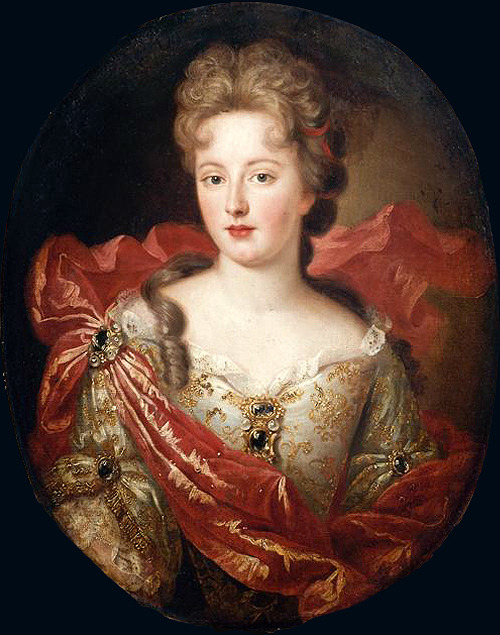

But!! OFMD gives Antoinette a much taller wig with a single minuscule curl over the shoulder and pearled strings as decorations. This is almost a perfect picture of women's wigs in the 1780s, which were much taller (reaching three feet sometimes! This source calls a wig "36 pounces [inches] high"). They also tended to have a greater sense of accessorizing, with gems, flowers, and even taxidermy being present in the larger wigs found in fashionable, high-class women, as well as the hair being powdered white fashionably. Lastly, they rarely featured the forehead curls found in earlier 1700s wigs/hairstyles, rather going for rolls on the side/back of the head or a rounded hairline. Check out these other examples of late 1770s-1780s wigs!

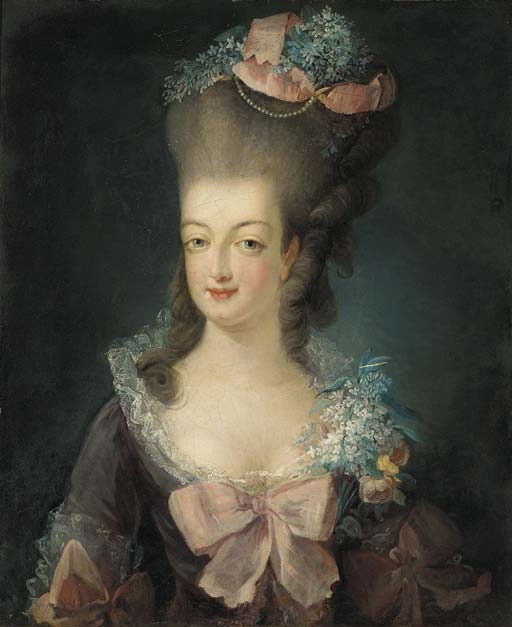
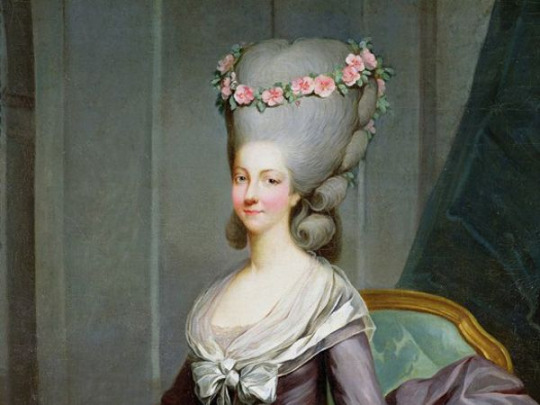
Anyways, I'm a little insane over how bad they overshot the size of costume wigs. And there's a whole argument to be made about the style of men's wigs presented but that's another post...
11 notes
·
View notes
Text

I am feeling fine and perfectly normal about them. :)))))))
#there’s a lot of very interesting meta and analysis going around and I love that#but I personally have just been staring at gif sets of these two and descending into madness#ofmd#ofmd s2 spoilers#ofmd s2#gentlebeard#blackbonnet#stede bonnet#blackbeard#edward teach#art#our flag means death
4K notes
·
View notes
Text
Thoughts on the lack of Jim speaking Spanish in episodes 1-3? The only Spanish is when they are counting with Archie.
Which might be something? No one was there but Archie, Izzy was unconscious…maybe they felt like they could…unmask? Or is it not that complex? Thoughts?? I am out of my depths
Maybe now they are with Olu, someone who makes them feel completely safe, they will feel relaxed enough to show their whole self?
I don’t go here, I usually analyze Ed/Stede, but I can’t stop thinking about it
#Spanish#jim jimenez#spoilers#ofmd s2 spoilers#our flag means death#ofmd#oluwande boodhari#Archie#our flag means death spoilers#OFMD meta#our flag means death meta#ofmd thoughts#ofmd analysis#our flag means death analysis#season 2#ofmd s2
18 notes
·
View notes
Text
why I love ofmd's editing so much (episode 4) part 2
Hello everyone! First of all, I want to thank everyone who liked the first part of this little meta and to those who decided to follow me after that. I was pleasantly surprised by it and I truly appreciate it. It's nice feeling you are not just screaming into the void.
Like I said before, my intention is to analyse the way the frankly brilliant editing of this show helps convey and explore the different themes presented by it. You can check the first part here where I analyse the first part of the opening sequence of episode 4 and the way the editing conveys in minutes the societal pressure around the arranged marriage of Mary and Stede. Now, I will try to show how the editing helps convey the state of discomfort both Mary and Stede feel after they have been forced to go on with the marriage. Buckle up. It gets wild.
Part 2. Discomfort
When I read the title of episode 4, the word “discomfort” stuck out to me for some reason. It’s a very peculiar word that I don’t see being used regularly. I'm probably biased since I'm not a native speaker of English but, still, there’s something with that word that just nagged me.
Like the nerd that I am, I went to look for its meaning in a dictionary and this is what I found:
a feeling of being uncomfortable physically or mentally, or something that causes this
Discomfort is also pain, usually not severe
The thesaurus bit had me cracking up. I’ll let you draw your own conclusions:
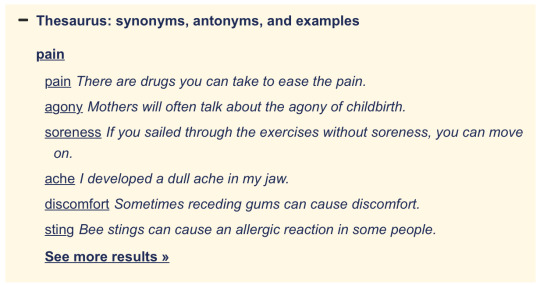
Back to editing, how do you show discomfort? More so when we can all agree that the discomfort we are dealing with here is more on the "mental" side of the spectrum. Well, you do so showing distance. Remember I mentioned in the previous post that the last time we saw two people siting together and, therefore, agreeing with something, establishing connections, was the last shot of mum and dad, a.k.a the heteronormies? Keep that in mind.
Once the marriage situation has been settled, we have the first cut to a different setting and the first shot we have is a close-up of Stede’s face, who is standing rigidly still as he speaks:

“I’m Stede, by the way”
We have another cut and now we have a close-up of Mary, who doesn’t look as stiff as Stede but is still very much not happy:

“I know. Mary.”
We have a beat with no dialogue until we hear Stede’s voice coming out of frame.
"Oh,"
Then we see his hand appear and, in a way, invade the space that had been Mary’s up to this point.

The tips of his stiff fingers barely touch her, the first point of contact in what had been separate and broken cuts.
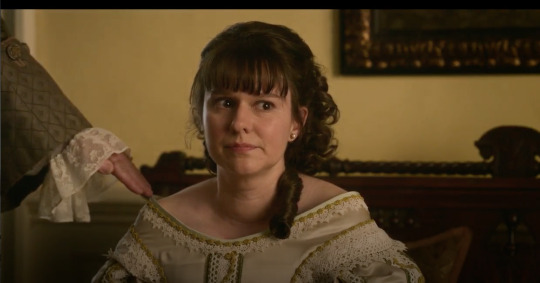
“Yes”
Then we have another cut and, this time, the shot opens up and we can see the whole picture. Literally.

"I know." Stede says.
In contrast to the previous sequence were one could argue Stede and Mary were almost the same person, here the editing uses cuts, close-ups, and wide shots to bring our attention to the degree of discomfort Stede and Mary feel from the get go in the situation they are in, having to marry a complete stranger and, worse, having to pretend there’s a connection when there is absolutely nothing.
The first close-ups isolate both Stede and Mary, both refusing to reach out even when they are talking. Obviously this is to be expected; this the first time they are actually meeting in person and, if we look at their clothes, it’s happening right after their respective parents broke the news to them that they would have to marry. Remember both Stede and Mary had the expectation of marrying out of love and after forming a deep connection with the other person. This obviously is not what they wanted and both close up (pun intended), refusing to make any effort of connection beyond the bare minimum.
The bare minimum here is represented by Stede reaching out until he touches Mary’s shoulder with the tips of his fingers; however, instead of portraying this action as a friendly “we might as well make this bearable for each other” sort of situation, the editing chooses to have Stede’s voice come off screen and, worse yet, his hand begins invading what had been Mary’s space so slowly and tentatively that is painful to watch. Mary doesn’t even turn to look at it, she even looks like she gets more tense as the hand approaches menacingly until it makes contact. And don’t get me started on the contact. Look at this. I’m not exaggerating when I say I cringe every time I see it.

The editing gods decide then that we’ve had enough of cold close-ups and icy cuts, and give us a wide shot that finally has both Stede and Mary together inside the frame…but, nope, this is still discomfort.

There’s a disconnect as Stede is standing, somewhat far away, from Mary, who is sitting down. They are not at the same level. The only point of contact is Stede’s hand but we already established that it doesn’t count because it’s not conveying any sort real connection.
Nevertheless, what truly made me want to crawl out of my skin was the point of perspective we get as audience inside the shot, created through the placement of the camera and the compositional layers or levels in the shot. To explain this a little bit more, I will take a small detour. Stay with me, I’m actually getting somewhere with this.
This is Velázquez’s Las meninas:
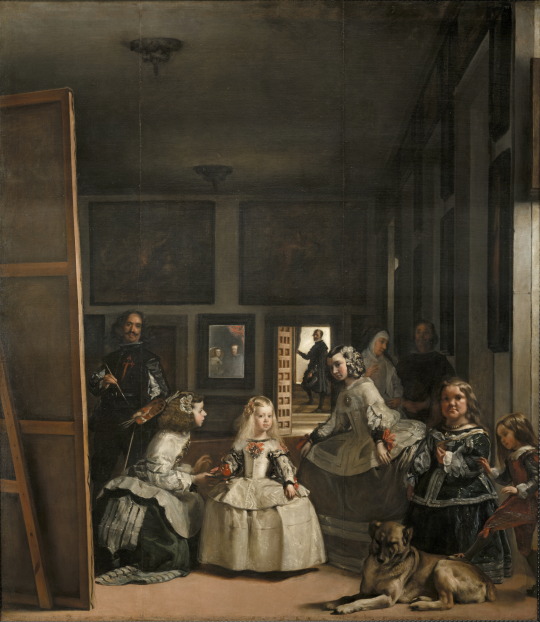
One of the great things about this painting is that it creates, through its composition, several different points of view or perspectives for the various characters that are there, at the moment in which a painting is being made.
There’s the first level where the little girls, the dog, and the cheeky little self-insert of Velázquez are situated. You then have a second level behind the first one where you can see the mirror with the reflection of the king and queen of Spain. Then there’s a third level at the background where a man has stopped in his tracks to look through the door frame to whatever is happening in front of him. Last but not least, we have a fourth level that is not apparent but is created by the people in the three previous levels who are looking at the front. Who is at the front? Us. The spectator. We are witnessing this slice of life, intruding even by the way everything seems to have stopped because we decided to quickly peek inside to see what was going on. And, since we are both witness and spectator, Velázquez uses this to draw attention to the fact that everything is arranged with the idea that it has and will be seen by others. This is a social act.
Now let's look back at our shot:

We have three levels, or layers, here: the first one is Stede and Mary, who, as it turns out, are posing for a painting. In the second layer we have our friend the painter who I will call Leonardo because David Jenkins loves anachronistic jokes and I stan. Finally, the third layer is us, conveyed through the placement of the camera which puts us in the perspective of a nameless onlooker and, by witnessing this painting, we are playing the role of that entity who is looking at this arranged scene and, even, for whom this whole thing has been arranged.
This is not a shot that is used to convey what could have been a terribly awkward, yes, but an attempt to create a true connection between Stede and Mary. No. They are posing to keep appearances. Feigning cordiality by “remembering” their names. They might be sharing space in the same shot, even sharing the space of the same layer of the shot’s composition, but they are not together, not really. They are as apart as they were with the close-ups, pushing down their identities and personalities, their true desires, to be able to stand and perform for what society requires of them.
This is a picture of discomfort.
I told you it was wild.
Anyway, for the next, and final, instalment in this trilogy of this heteronormative clusterfuck of repressed identities for societal expectations, get ready for the representation of awful copying mechanisms in a married state through the magic of editing. Spoiler: it doesn’t get better -> [part 3]
#ofmd#ofmd meta#our flag means death#our flag means death meta#ofmd analysis#stede bonnet#mary bonnet#ramblings#this one was longer than the last one#ofmd ep 4#ofmd e4#our flag means death analysis#again please don't let this flop lol it took me ages to do it#hopefully this makes sense
58 notes
·
View notes
Text
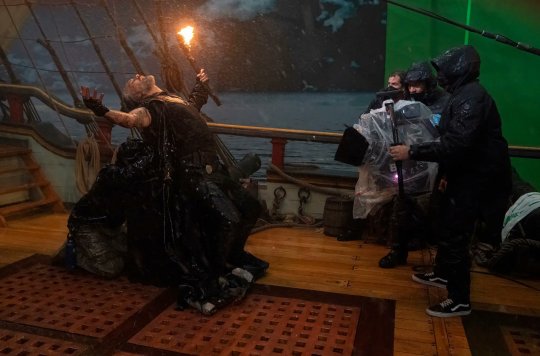
I love this photo because you get to see the unseen bts roles.
- The person kneeling, hidden from camera, and holding the actor up.
- The camera people, and how they protect themselves and the equipment from the rain.
- How Taika is standing on something solid so he doesn't slip on the wet wooden floor in the rain. He is sitting on the cannon but his feet are slip-proof.
- The only live green screens are the ones in the shot.
Filmmaking. Gorgeous.
Photo Credit
#ofmd#our flag means death#ofmd edward teach#taika waititi#ofmd filmmaking analysis#behind the scenes#i love filmmaking#adopt our crew#saveofmd
885 notes
·
View notes
Text
Been thinking about the kiss scene and Ed asking to go slow and Stede reaching out to hold his hand, asking if it's okay.
Yes, it's awesome that Ed is setting boundaries and Stede is honoring those boundaries, but I think there's more to it than that.
Stede tries to initiate more during their kiss. He's the one who grasps Ed's hair, the one who takes the kiss from chaste to passionate. Stede is a man who has been denied human connection and intimacy for most of his life. He's a man dying of thirst in a desert and Ed is the beautiful oasis he's stumbled upon, so of course Stede wants to drink his fill. Who wouldn't want a piece of Edward Teach? But then Ed pulls away, uses Stede's own words against him, and you can immediately tell that Stede is scared he's being too much.
I've been a very physically affectionate person my whole life. I love hugs and giving cheek kisses and snuggling so much. I still sleep with my baby blanket so I have something to hold at night. I'm always afraid of being too much for other people. I've overstepped other people's boundaries before and it feels awful to do so. Because of this, I've often compromised my own need for physical affection, always letting other people set the boundaries and never telling them if I need more. This became a big problem in my last relationship; I accepted less than crumbs even though I was starving.
Stede is clearly starving for any physical contact with Ed. He sits close to him on the couch in Anne and Mary's house, always moving and leaning closer. He tries to initiate more during their kiss and even grabs Ed to keep him from moving away. So, when Ed sets a clear boundary, Stede is terrified to even initiate another touch. He's afraid of being too much, of scaring Ed off.
Which is why it's so fucking brave of him to ask if holding Ed's hand is okay.
Ed jokes about them both being the fish that wants to get caught and Stede visibly relaxes at the familiar banter between them. So, he takes a risk and reaches out for a point of contact that he needs. Because he's scared of being too much, scared of scaring Ed away, scared of never being touched ever again. He needs reassurance, needs to make his own need for contact known, needs to make sure he's not too much.
And it's almost like Ed realizes this and immediately takes Stede's hand, immediately says "this is perfect this touch is perfect this contact is perfect your touch is perfect." And then Ed initiates even more touching by stacking their hands, by initiating play that Stede immediately latches onto. Ed sees Stede's desire and says "I'm not ready for more yet, but I can meet you halfway. I can give you reassurance and contact in simple ways until I'm ready for the next step."
And that is just so beautiful. It's not just the boundary setting and boundary honoring, it's the recognizing of needs and making a compromise to meet someone halfway.
#sorry if that got too personal in the middle#fucking apologizing for myself on my own posts#ugh#ofmd#our flag means death#ofmd s2#our flag means death season 2#ofmd season 2#our flag means death s2#stede bonnet#the gentleman pirate#edward tech#ed teach#blackbeard#blackbonnet#gentlebeard#ofmd analysis#ofmd spoilers#ofmd s2 analysis#ofmd s2 spoilers#our flag means death spoilers#our flag means death season 2 spoilers#you wear fine things well#you wear fine things well 2 electric boogaloo#i want that last one to become a common tag#that would be so fucking funny
1K notes
·
View notes